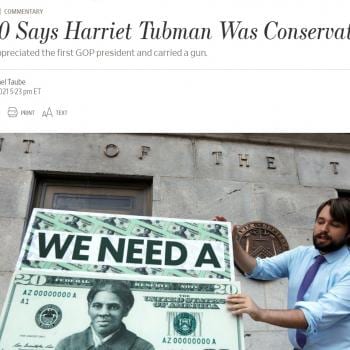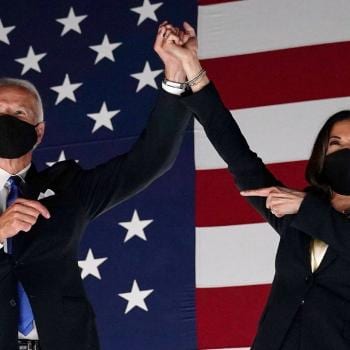This weekend, in Bristol, UK, protestors allying themselves with the Black Lives Matter movement in the United States pulled down a statue of Edward Colston, an English slave trader, rolled it to the docks, and dropped it in the sea.
bristol in three acts pic.twitter.com/DIYh5usmmB
— Josh Begley (@joshbegley) June 7, 2020
Colston, who lived in Bristol, was heavily involved in the Royal African Company from 1680 to 1692, even surging for a time as its deputy governor. During these years the company transported 84,000 enslaved Africans to the Americas. One-quarter died during the passage due to inhumane conditions. While his involvement in the company ended in 1692, he went on privately trading in slaves until his death.
Edward Colston made his money off of buying and selling people and used that money to create charities in Bristol. Indeed, the Colston name is in some sense synonymous with the city of Bristol. In recent decades, this unresolved history has made a growing number of people in Bristol understandably uncomfortable. Activists in Bristol have been trying to remove his statue since the 1990s.
Now they finally have.
Meanwhile, in Belgium, protestors allied with the Black Lives Matter movement defaced a statue of King Leopold II, responsible for the genocide of 10 million people in the Belgian Congo, covering it with red paint and then setting it on fire; Belgian authorities responded by removing the statue.
George Floyd's death continues to reverberate around the world. In Belgian city of Antwerp, the statue of late King Leopold 11 (who reigned over the mass death of 10 million Congolese) was removed.
Follow @YinkaFadayomi#ALLLIVESMATER #AllLivesMatter #BlackLivesMattters pic.twitter.com/38pxFx5Xhr
— Eagles Reporters (@eaglesreporters) June 9, 2020
I was already familiar with Leopold II, but I poked around a little bit, curious what happened to the Congo later, and was unsurprised to find that the West went on mucking things up in the Congo throughout nearly the entire twenty-first century. These things are not merely long ago.
In 1960, only months after Patrice Lumumba was elected the first president of the Congo, Belgium backed the secession of Katanga, the wealthiest and most developed part of the new nation. Concerned that this would be a Belgium puppet state designed to protect the mineral rights there that Belgium still owned, Lumumba turned to the UN for help. After the UN declined any help, Lumumba turned to the Soviet Union. Concerned that the Congo would become part of the communist sphere of influence, the U.S. and Belgian governments overthrew him in a coup, replacing him with army head Joseph Mobutu.
That is the story of the first democratically elected government of the Congo. Mobutu, supported by the governments of United States, France, and Belgium, turned the Congo into a totalitarian state, eliminated his adversaries, and engaged in rampant corruption and embezzlement, using the nation’s wealth to enrich himself and his allies. Mobutu also wrecked havoc on his nation’s economy. Propped up by the West, he remained in power until the 1997, when he was finally overthrown.
1997. Let that sink in. I remember 1997.
But these statues are not alone alone the monuments to be removed or amended during the last two weeks of protests. Not in the least. In the UK, a monument to Churchill edited. “Churchill,” the letters read in curved stone. “Was a Racist,” reads graffiti below it. And, well, he was.
https://twitter.com/Irish_Atheist/status/1269986259000320007
In 1937, Churchill said the following:
“I do not admit, for instance, that a great wrong has been done to the Red Indians of America, or the black people of Australia. I do not admit that a wrong has been done to those people by the fact that a stronger race, a higher-grade race, or, at any rate, a more worldly wise race, to put it that way, has come in and taken their place.”
That Churchill fought against Hitler did not make him not a racist. Furthermore, Churchill did not fight Hitler in an effort to liberate the Jews. At all. He fought against Hitler because of Hitler’s expansionist policies—in other words, because Hitler was making plans to take over much of Europe.
Oh—and a Confederate obelisk in Birmingham, Alabama, also came down this week:
https://twitter.com/siddhmi/status/1267643746763538432
Our iconography matters. Toppling statues is of the first things people liberated from an oppressive regime tend to do. We have icons for a reason: they reflect our culture, and who we are as a people—or who we want to be.
Let me finish with one other creative statue amendment that has actually earned some critics—who I think are missing the point.
https://twitter.com/JackBMontgomery/status/1269305806333370368
This statue was not defaced. The paint that was added merely lists the names of some of those killed by police, with no other commentary. The signs at the foot of the stand are beautiful. And the cardboard signs hung on Lincoln’s statue read “Hate Kills Love Heals” and “We Need a New World.” While he was far from perfect, I would like to think that Lincoln would agree.
I have a Patreon! Please support my writing!















